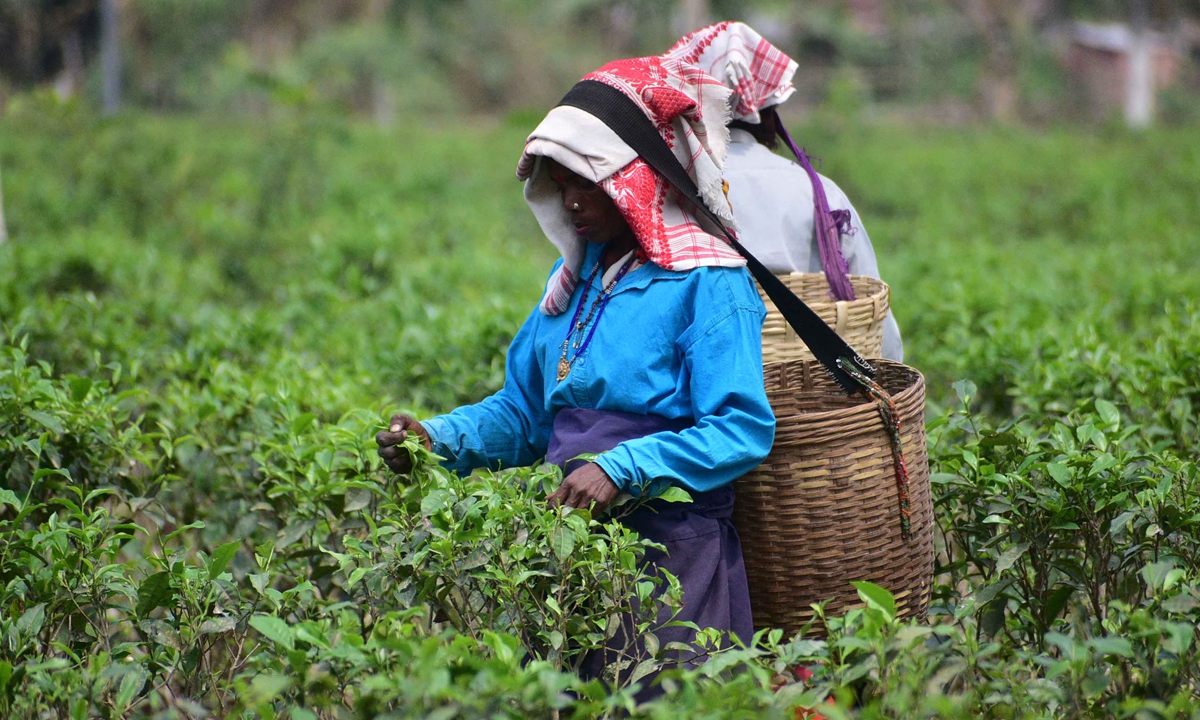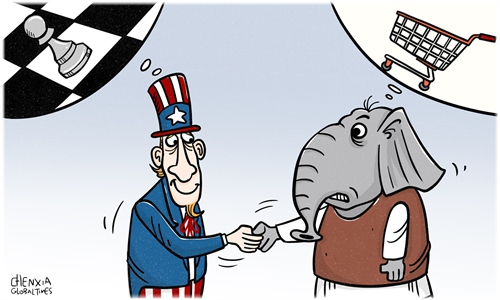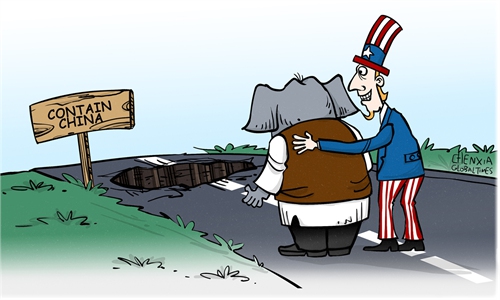Obama is right, India's development can't go far without resolving ethnic issues

Workers carrying baskets pluck tea leaves, at Tea garden in Nagaon District of Assam, India on March 18, 2023. Photo: AFP
While Washington received Indian Prime Minister Narendra Modi with unprecedented enthusiasm, former US president Barack Obama made a few displeasing comments. In an interview with CNN, he said that if India does not protect its Muslims, there is "a strong possibility that India at some point starts pulling apart."Whatever Obama's reason was for saying this, he has touched on a sensitive issue in India's national governance - the treatment of minorities.
India is a multi-ethnic country, and since its independence in 1947, there has been no end to the bloodshed and instability caused by ethnic conflict.
On Tuesday, some activist organizations planned a shutdown strike in the southern parts of Assam State. On June 5, tension has returned as two people were killed in gunfire at Assam's Dhemaji district, despite a historic MoU in 2022.
The Crime in India-2021 report, released by the country's National Crime Records Bureau, shows 780 incidents of rioting in Assam during the year, with 1,498 victims.
In fact, other states in northeast India often experience serious riots as well. However, I mentioned Assam because there are similarities between Assam and the Pu'er city of China's Yunnan Province near Myanmar, which I recently visited.
It is unclear how many ethnic minorities there are in Assam in total. In Pu'er, there are 14 ethnic groups.
Both regions have the characteristics of the Zomia region that I mentioned. Another common factor is that both regions are renowned for tea production. Assam produces black tea, while Pu'er produces tea cakes made from tea leaves picked from ancient tea trees.
Assam's economy heavily relies on tea exports. According to Indian media data, northeast India contributed about 83 percent of the country's annual tea production in 2021-22 with the majority of the production coming from Assam.
The Pu'er economy is more diversified, with modern industries such as manufacturing, digital economy, logistics, and bio medicine emerging as key sectors. Tea production and exports now only account for a small percentage of Pu'er economy.
The difference in development levels between the two regions also translates into varying levels of social stability. In China, Pu'er has become one of the most livable regions, while in Assam, there were continuous conflicts between different ethnic groups. The state elections in February 1983 witnessed clashes between Assamese and outsiders, resulting in thousands of deaths.
Assam's GDP per capita is $1,500 (2021-22), while India's per capita GDP is around $2,300. This region's education and infrastructure levels are also well below the Indian average. In contrast, in 2022, Pu'er's GDP per capita reached $5,950.
When comparing Pu'er with Assam, the most significant difference is that Pu'er has been integrated into China's modernization and development process, being a partial part of a larger game. Whether it is roads, bridges, power stations, schools, hospitals, infrastructure, or family income, Pu'er is similar to other Chinese cities of the same population size. Assam, on the other hand, remains on the fringes of India's development and is even sidelined.
The dichotomy of different ethnic and religious beliefs, along with the inability of minorities to participate in the country's development and the greater difficulty of having a sense of national identity, portends greater trouble for India in the future. That has been the main reason for conflicts in the past decades.
The mainstream majority and the minorities may have had their own history of development in the past. However, in the 21st century, as long as they have a shared future, the governance of the country can become an entire "chessboard," as the title of a Chinese film about the education of children in poor areas suggests - Not One Less. With this approach, the country's development can move forward steadily.
No matter how highly the US touts India's democracy, if the country's various ethnic groups do not develop in tandem, enjoy the dividends of development, but remain divided along religious lines, its modernization will not be sustainable and will always face the possibility of division.
The author is a senior editor with the People's Daily and currently a senior fellow with the Chongyang Institute for Financial Studies at Renmin University of China. dinggang@globaltimes.com.cn. Follow him on Twitter @dinggangchina



